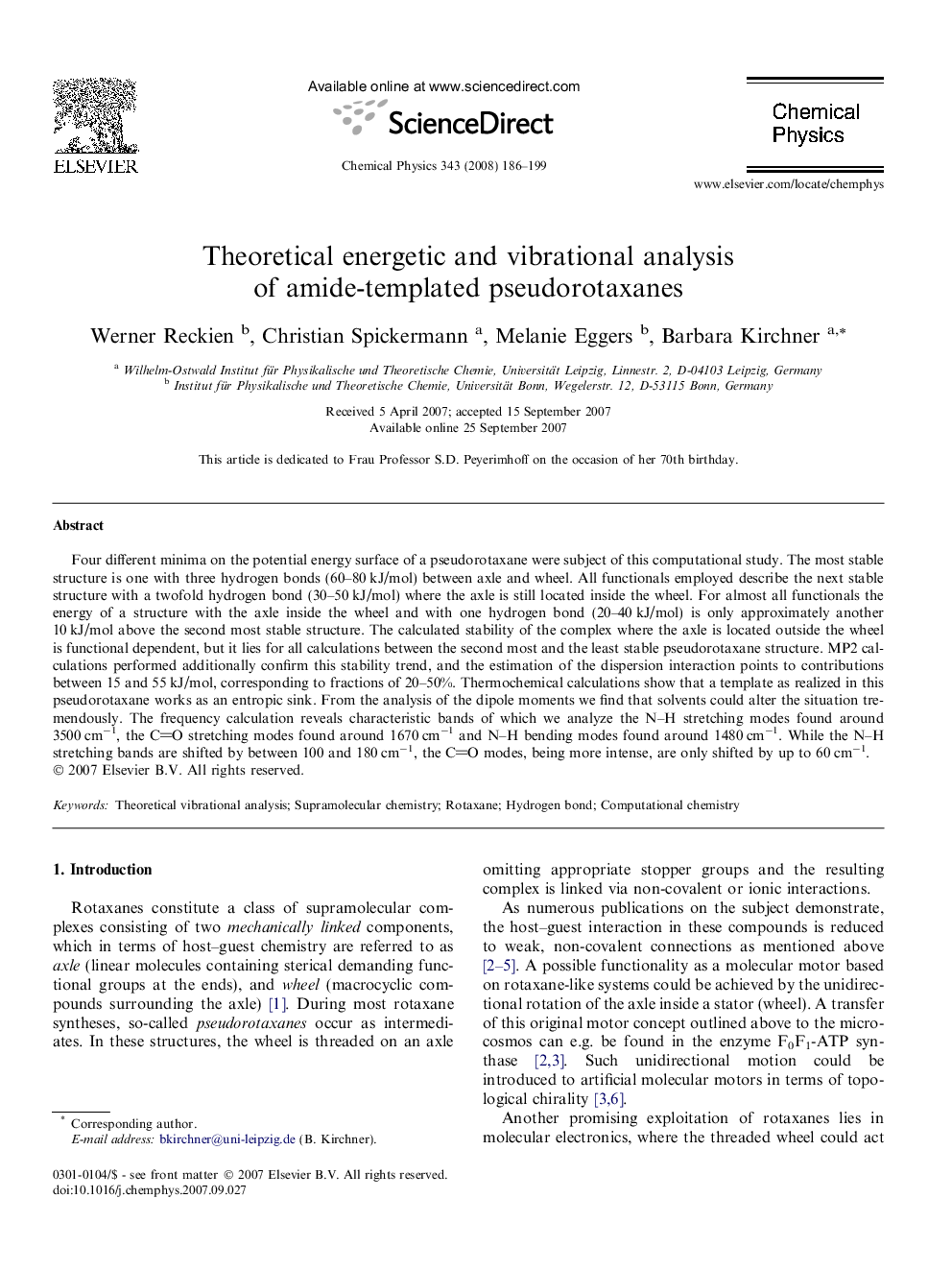| Article ID | Journal | Published Year | Pages | File Type |
|---|---|---|---|---|
| 5376238 | Chemical Physics | 2008 | 14 Pages |
Abstract
Four different minima on the potential energy surface of a pseudorotaxane were subject of this computational study. The most stable structure is one with three hydrogen bonds (60-80Â kJ/mol) between axle and wheel. All functionals employed describe the next stable structure with a twofold hydrogen bond (30-50Â kJ/mol) where the axle is still located inside the wheel. For almost all functionals the energy of a structure with the axle inside the wheel and with one hydrogen bond (20-40Â kJ/mol) is only approximately another 10Â kJ/mol above the second most stable structure. The calculated stability of the complex where the axle is located outside the wheel is functional dependent, but it lies for all calculations between the second most and the least stable pseudorotaxane structure. MP2 calculations performed additionally confirm this stability trend, and the estimation of the dispersion interaction points to contributions between 15 and 55Â kJ/mol, corresponding to fractions of 20-50%. Thermochemical calculations show that a template as realized in this pseudorotaxane works as an entropic sink. From the analysis of the dipole moments we find that solvents could alter the situation tremendously. The frequency calculation reveals characteristic bands of which we analyze the N-H stretching modes found around 3500Â cmâ1, the CO stretching modes found around 1670Â cmâ1 and N-H bending modes found around 1480Â cmâ1. While the N-H stretching bands are shifted by between 100 and 180Â cmâ1, the CO modes, being more intense, are only shifted by up to 60Â cmâ1.
Related Topics
Physical Sciences and Engineering
Chemistry
Physical and Theoretical Chemistry
Authors
Werner Reckien, Christian Spickermann, Melanie Eggers, Barbara Kirchner,
